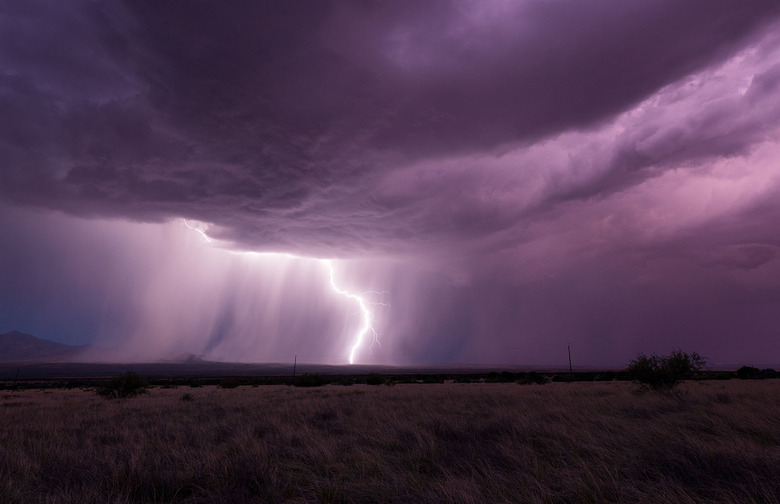The Most Violent Lightning Storm Ever Was Triggered By An Erupting Volcano
A volcanic eruption in January of 2022 may have been the trigger for the most violent lightning storm ever recorded, a new paper published in Geophysical Research Letters claims. According to the research, the 2022 eruption of the Hunga Tonga-Hunga volcano also saw violent lightning storms hitting. The eruption itself has already been a mainstay in scientific circles since it occurred, setting record after record.
Now, it seems it has set yet another record. Researchers used a combination of both ground-based radio antennas and satellite images to analyze the aftermath of the Hunga Tonga-Hunga eruption in 2022. During the peak of its eruption, it was reportedly spewing upwards of 11 billion pounds of material out per second, with it reaching at least 35 miles high, the highest volcano eruption ever observed.
Unfortunately, all the water, dust, and heat that the volcano released rose up into the atmosphere, giving birth to a terrifying and violent lightning storm that produced strikes are a previously unprecedented rate. Further, research has already shown that the lightning strikes moved outward with the wave, which moved at a rate of over 80 meters per second.
The storm itself was quite intense, with roughly 2,600 lightning strikes hitting per minute, more than 40 strikes per second. Further, the researchers say they observed lightning strikes that occurred up to 30 kilometers above sea level, which is notably higher than lightning strikes typically occur.
The data from the research suggests that when the right conditions are met, a volcano eruption like that of the Hungo Tonga-Hunga eruption can produce some of the most violent lightning storms that we have ever seen. Further, the dramatic dispersal of the material from the eruption is able to sustain those storms for long periods of time, and even cause them to move outward from the point of origin.
While this isn't something we'll need to worry about with every volcano eruption, it is an intriguing discovery that is sure to change how we look at powerful eruptions in the future.
